Non-Clocks
- Details
NixieKits.eu
About €110 for a complete kit, excluding tube
Back in the old days, when technology mysterious and needed to "warm up" before you could use it, there was a little green thing on the front of radio that told you how strong the signal was. These were "magic eyes", and they fell out of fashion, because they are hard to drive and there were much easier ways of achieving the same result. LED killed everything.
If you look around on eBay for "magic eyes", you'll find a fair umber of results, but only very few of them are full solutions.You're going to have to deal with the heater voltage, the driver voltage and mounting the tube yourself. That's no good.
Mr. Nixie has put together a kit for most Noval (9-pin socket) magic eye tubes, which takes care of the voltages needed to drive the tube, and has an automatic input gain adjustment, so you can just fit the tube in, connect it up to a supply and a signal, and you are ready to go!
If you fit an EM83 tube, (which is a stereo tube), you'll get a stereo display. Nice!
Links:
- Details
Video Review:
{vimeo width="700" height="390"}31228089{/vimeo}
Text Review:
Here is an interesting gadget from Jürgen Grau. It is a VFD tube based sound pressure level meter. The tube is an IV-26 with seven large indicators stacked vertically. As the sound level rises so does the height of the indicator. The sound is sensed via a built in microphone placed on the base right in front of the tube.
The device displays the sound level in several ways. When you’re building the kit, you have the option to choose between a single dot and bar graph mode. In dot mode, only the top most position is illuminated. So, if the readout is 74 dBa, then only that position is illuminated. In bar graph mode, the dots below it are illuminated as well. Finally, the user can select between peak mode and average (RMS). All of these setting are achieved by setting a solder jumper on the PCB.
Jurgen took great efforts to make sure this device was accurate. The readout shows the sound level in both decibels (A Weighted for human hearing) and Sone. According to the website: “The microphone is matched to the sensitivity of human hearing and the OP amp based active multipole equalization, full wave precision rectifier and integration circuit ensure that the display is accurate.”
I want to call out the enclosure too. The footprint is nearly identical to the NixieTherm but don’t be fooled, this design has some big improvements. First, the scale has several bright warm-white LEDs. This makes the markings much easier to read in daylight and it even appears that the markings are slightly deeper to help with this as well. The scale now is slightly thicker and has more robust mounting hardware inside the base of the unit which adds to stability. While this isn’t a kid’s toy, it is a solid design.
So what do I think? Well, this is a great device. It is fun to watch and it does exactly what you expect it to. For 79 EUR, you can’t really go wrong with this. (It would probably make a great Christmas gift too....)
Photos:
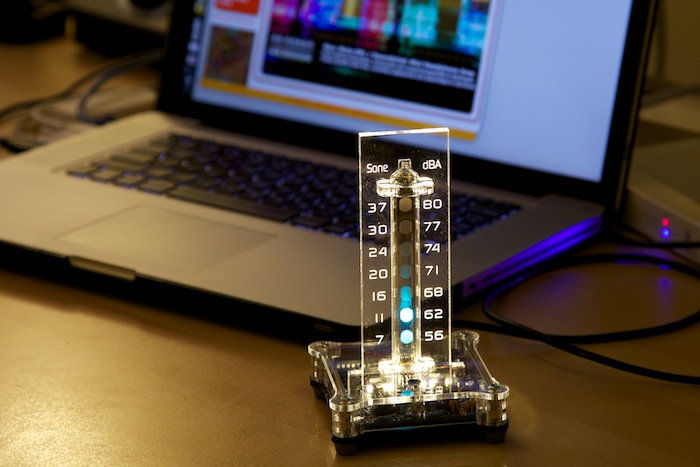
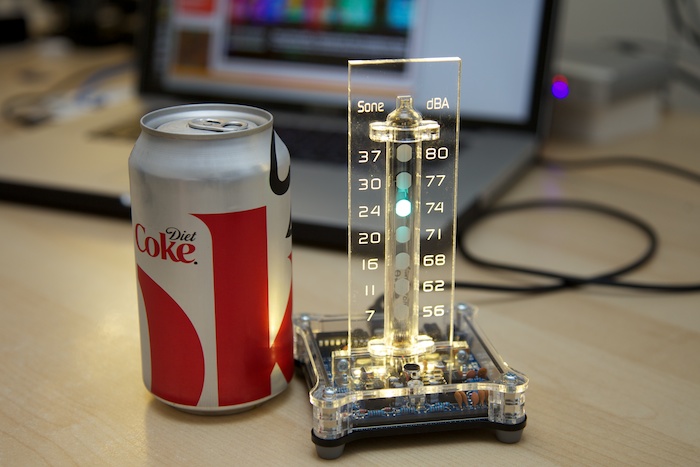
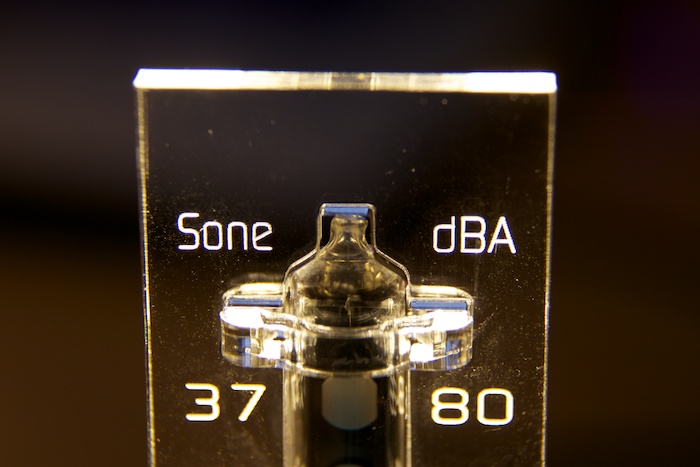
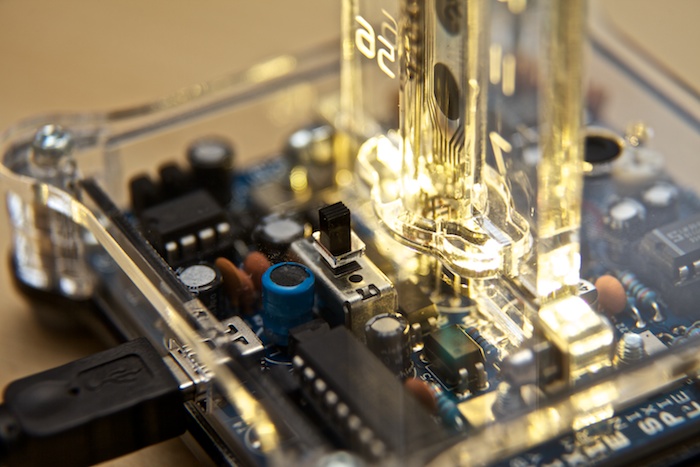
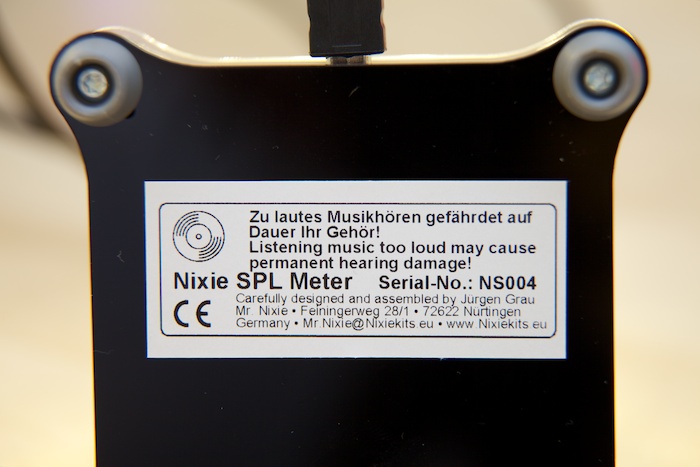
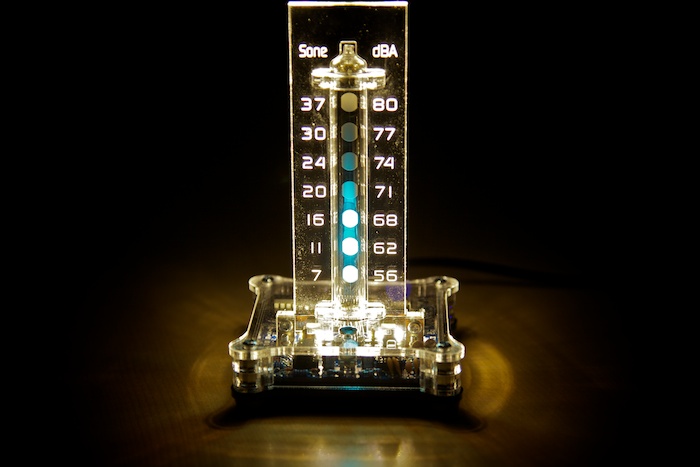
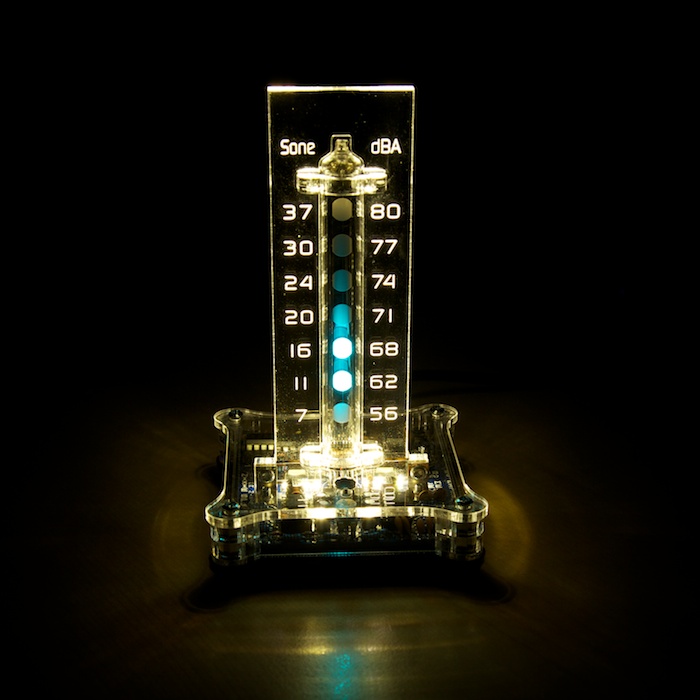
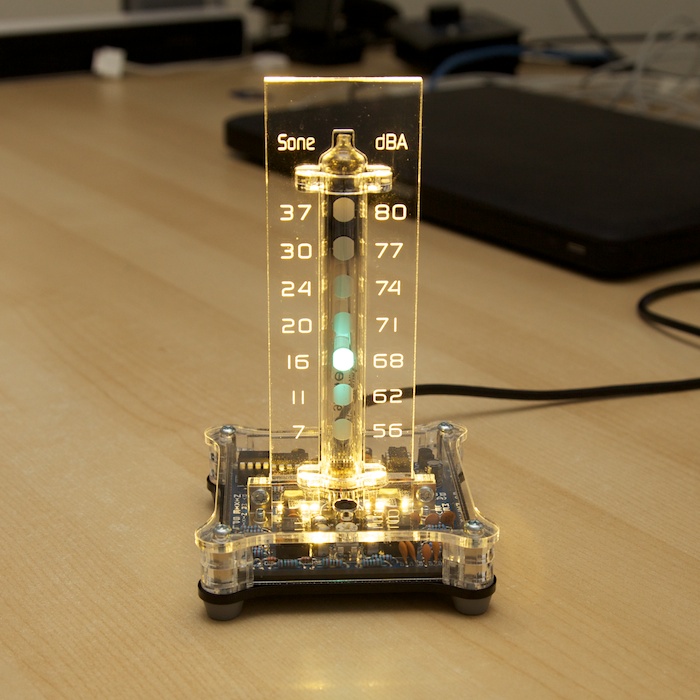
Links:
- Details
I know the last few updates have been about NixieKits.eu and this next device doesn't even have a display component - but it is cool, it is something that I would buy, and it is something that I think you'll like :) This is a headphone amplifier designed by Jürgen Grau. It is still a work in progress you can start to get an idea of what this will look like. For size comparison, It has the same footprint as the NixieTherm and Nixie SPL (70mm x 70mm).
I like this because I'm a bit of an audio nut. I own a nice pair of Sennheiser cans and a nice external firewire DAC for listening to music. I'm in the market for a headphone amplifier so this got my attention when he sent it to me. He is already working on an awesome VU meter so this new product makes sense.
To power the amp, you need a 12VDC 1A power supply and; the amp itself draws around 8VA. The 6N28B-V tubes are powered with a 34V anode voltage, created with a voltage trippler from the 12VDC. These tiny double triodes are from military surplus, have an ultra long life and are shock proof. They are specially designed to run with a low anode voltage (max. 50V). Thanks to the "star milling" socket soldering of these wired tubes is super easy. Output connector is a Neutrik 6.3mm stereo jack, inputs are RCA type.
The headphone amp should be for sale within a month so if you're looking for Christmas presents, this may be for you :)

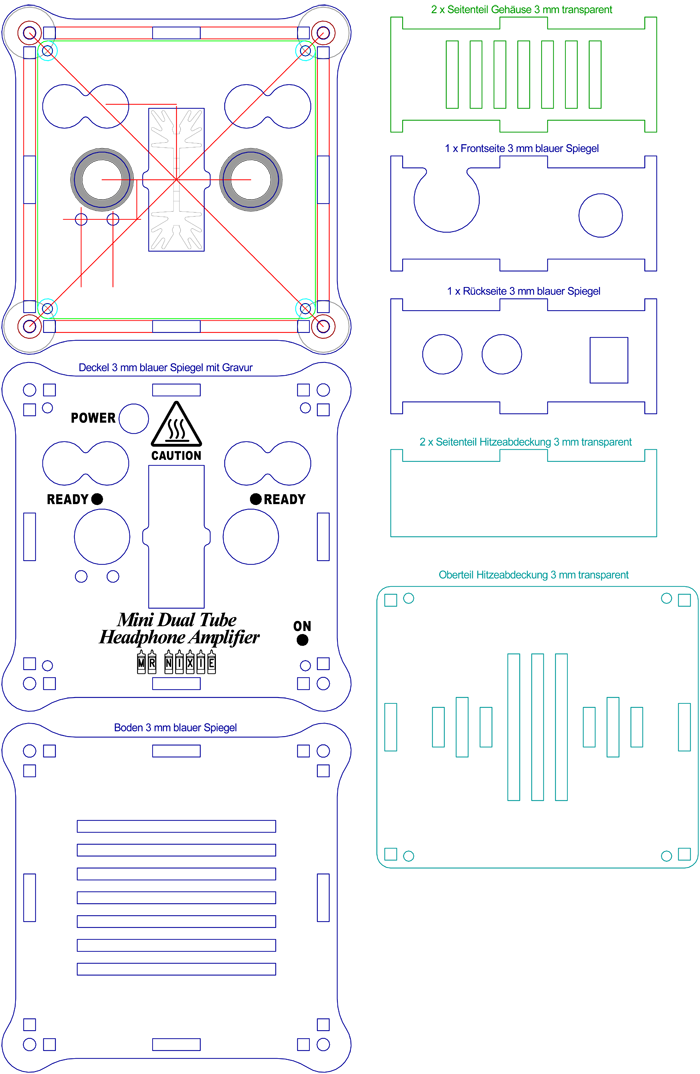
Links
- Details
by NixieKits.eu / 79 EUR
Jürgen sent me a few photos of a new project that I am really excited about. It is a VFD IV-26 tube to display sound levels. It is a sound level meter that displays either RMS or peak level displays. The unit is driven by an LM3915. Because of this, the unit is actually quite accurate; this gadget is more than just eye candy. It actually does what it was designed for.
The enclosure is almsot identical to the NixieTherm design. The big difference is the scale and the LED lighting. On this device, the LEDs are much brighter which enable the scale to be seen from greater distances. Go check out his site to purchase this awesome little device.
Video
{vimeo width="700" height="390"}30229050{/vimeo}
Photos




Links:
- Details
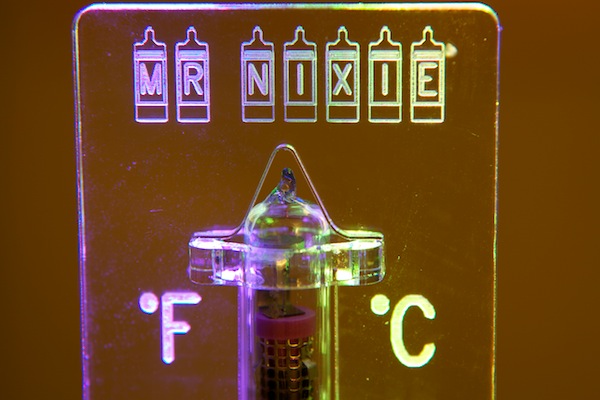
Jürgen sent me one of his NixieTherm thermometers for review and I’ve had a few days to play with it and so, here is another review:
VIDEO REVIEW
The device itself is pretty simple to operate. It takes a mini-USB power source and has one switch on the back of the unit. There is an adjustment pot on the bottom of the unit but once the device is calibrated there is little need to change this setting.
When you first power on the device, you will notice that the tube is reading out a temperature that is significantly lower than room temperature. Don’t be alarmed! This is normal. The device takes a little bit of time to warm up and start reading the correct temperature. This device is best left on as opposed to just turning it on when you want to read the current temperature.
One really cool aspect of this design is the fact that there is no microprocessor. This isn’t an Arduino project or a PIC based gadget. The thermometer portion is a 100% analog design.
Like most other NixieKits.eu designs, this device features LED back lighting. In this case, there are to RGB auto cycling lights under the plastic temperature scale. Each LED cycles at its own pace so the net result is a display where the Fahrenheit and Celsius scales are usually different colors. The backlight is on whenever the thermometer is on; there is no way to turn it off other than modifying the underlying circuitry.
The tube is an IN-9 Russian bargraph tube. It looks like the tube is made up of dozens of little neon bulbs but this is not the case. It is, in fact, one large tube and the height of the glow changes proportionately to the input voltage. The end result is a tube that acts like the mercury in a thermometer.
Below are two photos - one with a neon bulb and one with an argon variation. The tubes are identical in every respect except for the color.
Argon Tube
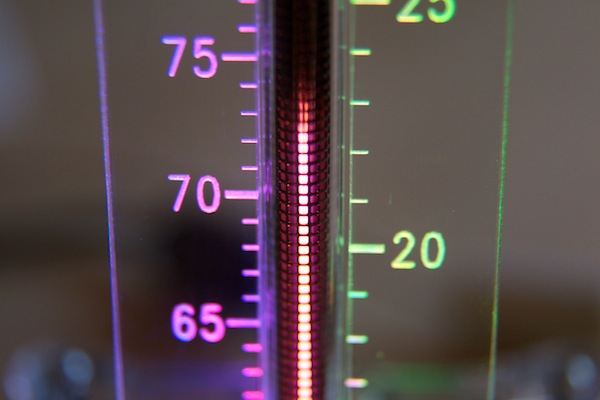
Neon Tube
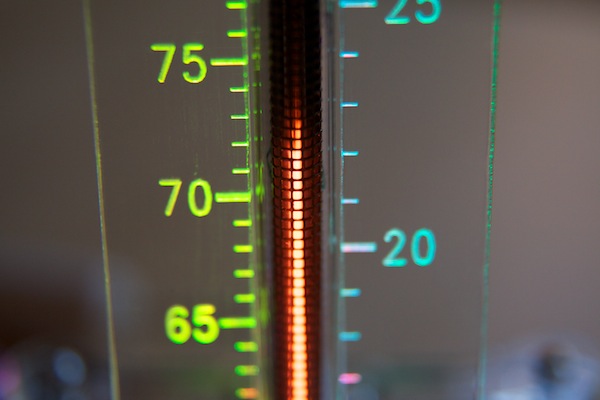
Kit
The price of the kit is 69 EUR and assembly is an additional 15 EUR. The PCB is through-hole only; there are no SMD parts. It should be pretty simple for someone to assemble from scratch with little experience.
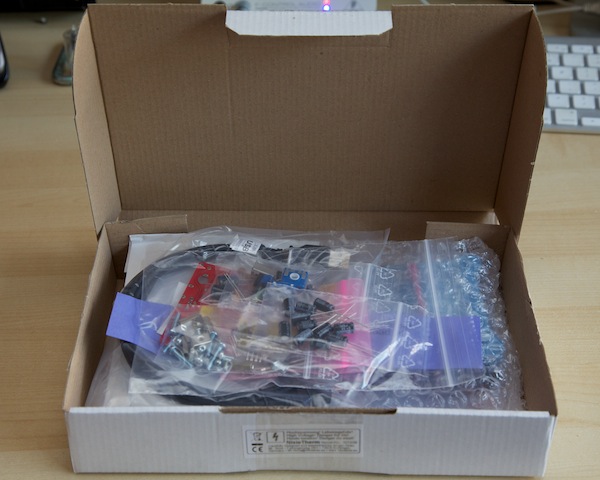
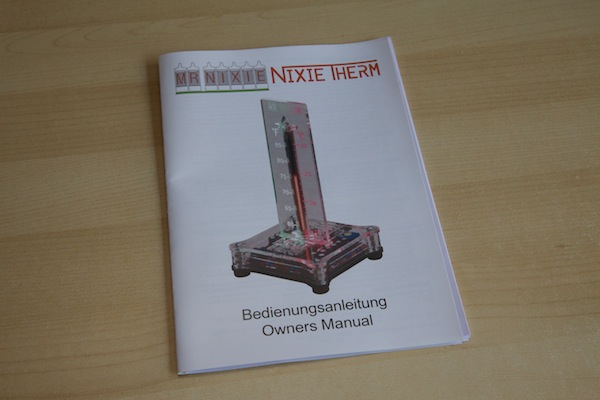
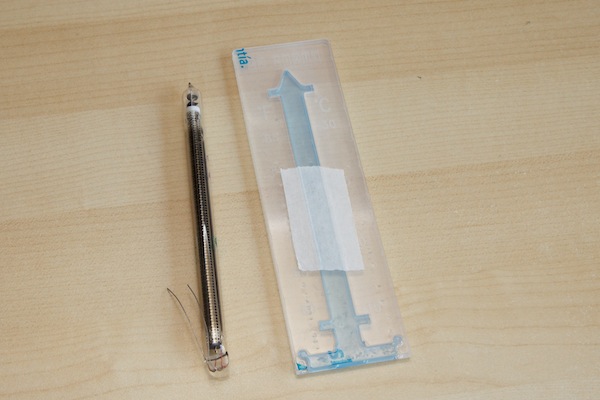
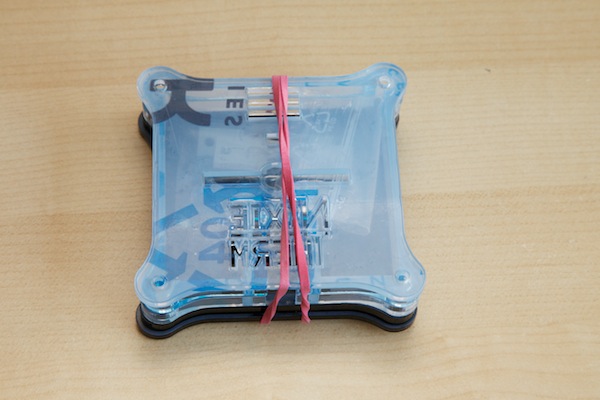
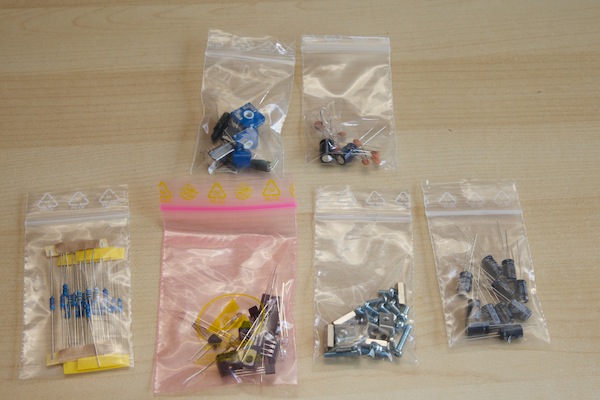
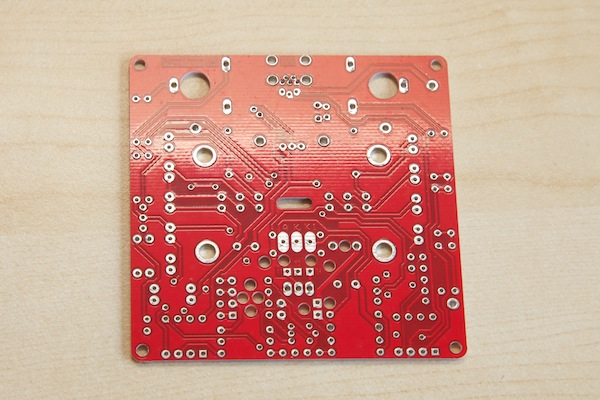
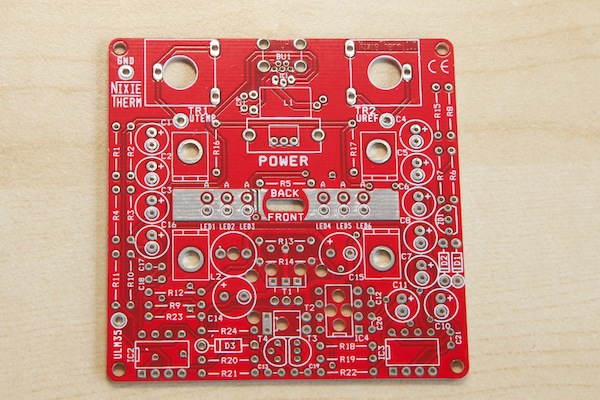
Photos
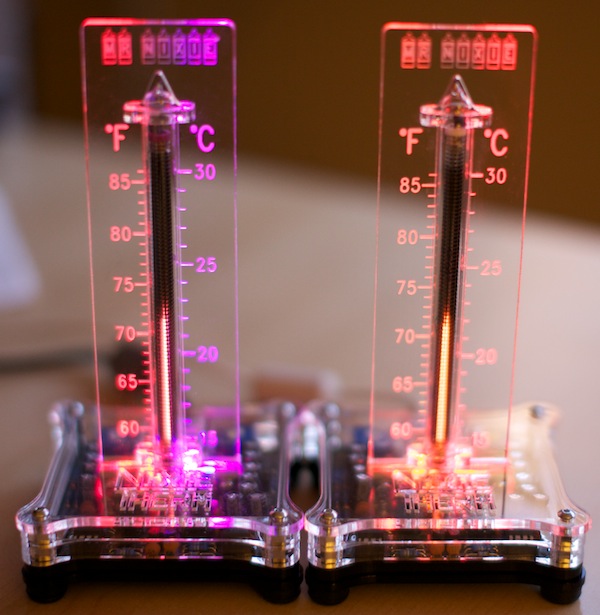
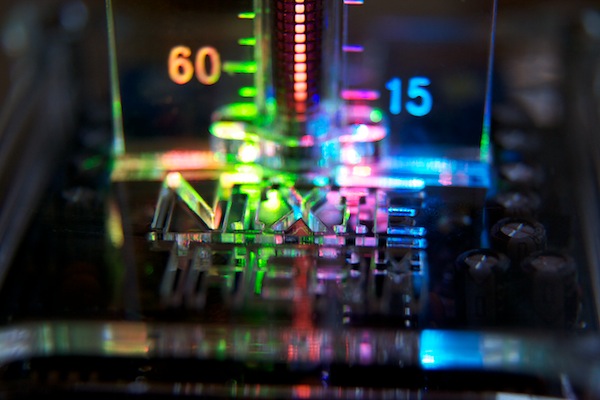
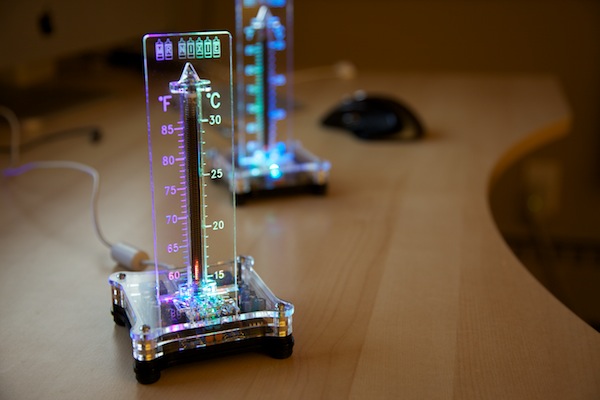
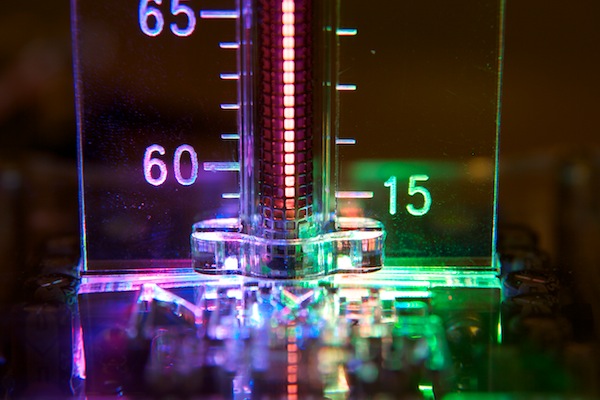
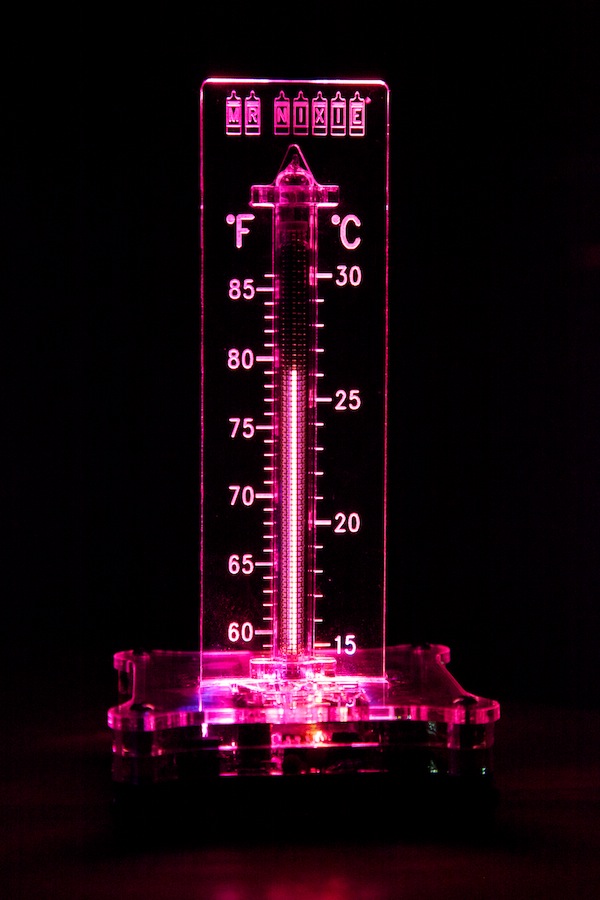
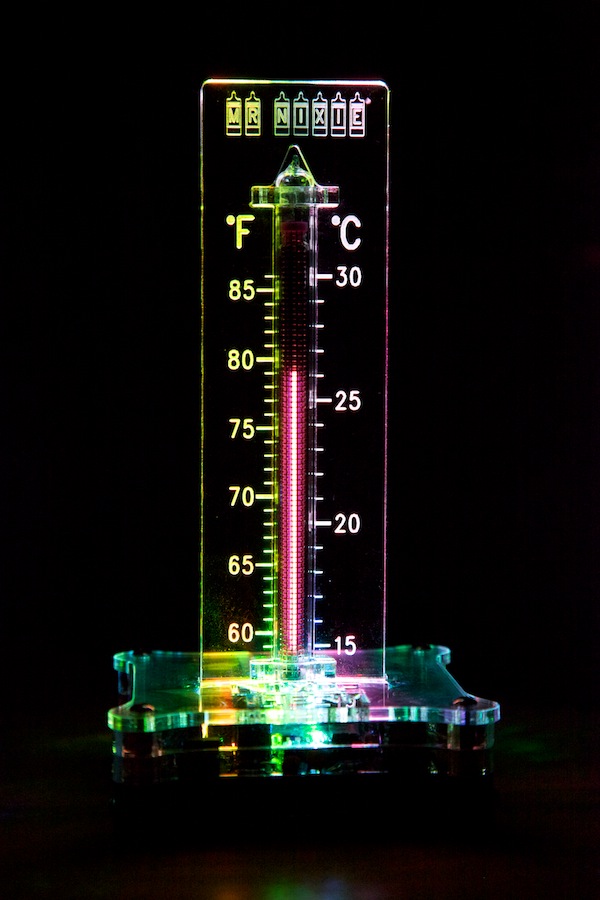
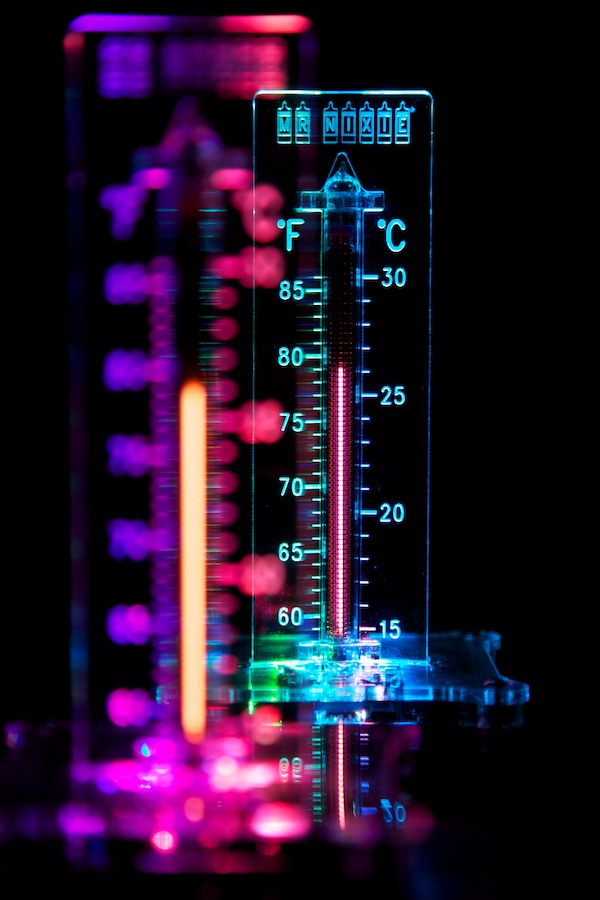
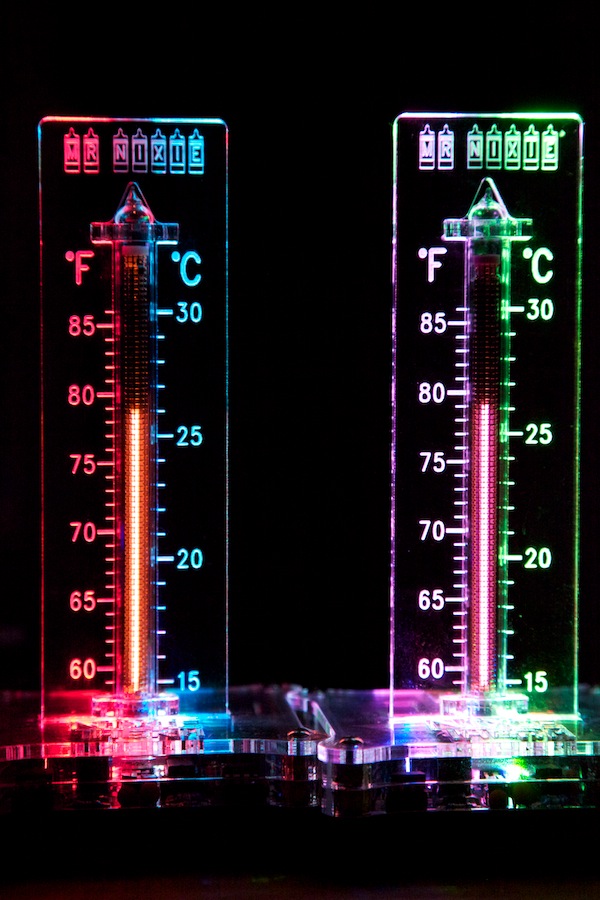
Links
- Details
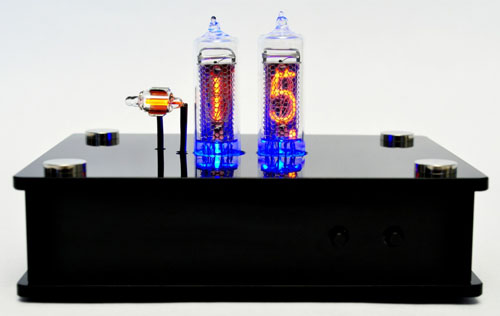
The Temp’n’Glow nixie tube thermometer got a bit of an update in the last few days. Claus-Dieter Urbach and Dieter Wächter have just released a nice enclosure for their thermometer kit. The device uses a Dallas DS18S20 sensor on lengths of wire between 1 and 10 meters. It supports up to two sensors so you can use measure both indoor and outdoor temperature at the same time. The update frequency and error detection settings are user adjustable. Lastly, to prevent cathode poisoning, the device cycles though the digits in a slot machine like effect to help lengthen the life of the IN-16s.
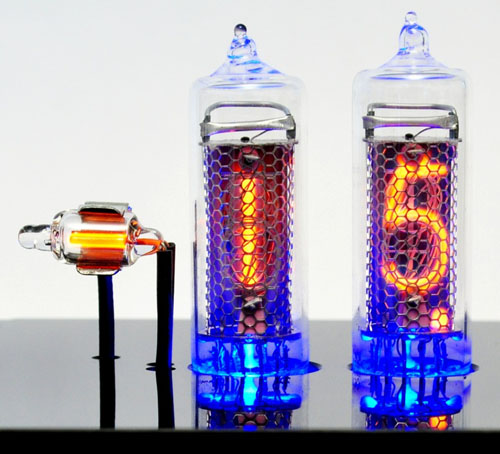
The enclosure features:
- black top
- black base
- crystal clear sides or black sides (optional)
- you can see the inside of the thermometer, if you use the clear side parts
- black side parts as an option
- the blue LEDs mirror on the black top
- tubes mirror on black top
- all holes for sensors and power supply
- holes for the 2 tubes at the top
- 4 nixie top plate screws - now included
- 4 distance holders 6mm
- very easy to build ( 2 minutes)
- no glue needed
- all side parts are pluggable
- all acrylic parts covered with foil to prevent scratches during building process
- 105mm x 75mm x 28mm

